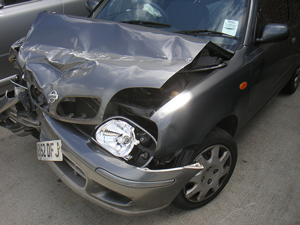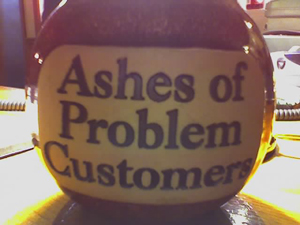
Source: Crashed car, Lee J Haywood, Flickr
To draw conclusions, you have to use information that is implied or inferred. This means that the information is not clearly or explicitly stated. If you infer that something has happened, you do not directly see, hear, feel, or experience it. Instead, you decide what has happened based on what you know and the evidence that you have.
You may not know it, but you make inferences every day, usually without even thinking about it. Here is an example:
You are standing on a street corner. You see a car speed around a corner. Soon, because of the houses and a vine-covered fence, you cannot see the car any longer. Next, you hear screeching tires followed by a loud crash and the sound of cans or barrels rolling around. You cannot see anything, but based on the evidence you have, you can infer that the car you saw speeding has hit something.
We are all familiar with the sounds of sudden skidding and crash noises. We also know that these sounds almost always mean that there has been an accident. However, you have only inferred that an accident happened; there could be some other source for the sounds you heard. Maybe the car sped off and something else caused crashing sounds and screeching tires. All you have to go on is what you saw and what you think happened after that. Making inferences means choosing the most likely explanation based on the facts at hand.
Take a look at this picture:

Source: Ingonish inference, gak, Flickr
What inferences can you make by looking at this picture? Read through the following statements and answer the questions that follow.
1. You walk into a store and you see the “Ashes of Problem Customers” sign. What can you infer from the sign?
2. What can you infer about the people that put the “Ashes of Problem Customers” sign on the counter?
To understand the warning pictured in the photo, you made some inferences. Sometimes writers will require you to do the same thing as you are reading. They do this by providing hints or clues that help you read between the lines. Once you can decipher what an author is trying to say, you can use these clues to gain a deeper understanding of what you are reading. When you infer, you go beyond the readily available surface details to get at meanings that the details suggest or imply. When we say that meanings are implied, we mean that you may infer them. It is important that you understand that an inference is not a guess; inferring is coming to an understanding based on evidence from the text.